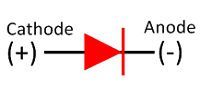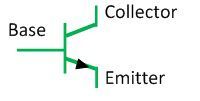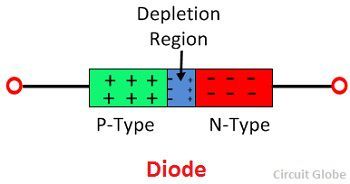One of the major difference between the diode and the transistor is that the diode converts the alternating current into direct current while the transistor transfers the input signals from the low resistance circuit to high resistance circuit. The other differences between them are explained below in the tabulated form.
The diode is also known as the crystal diode because it is made up of crystals (silicon or germanium). It is a two terminal device which starts conducting when the positive terminal of the supply is connected to the p-type region, and the negative terminal is connected to the n-region of the diode.
The transistor has three regions, namely emitter, collector and base. The emitter is heavily doped so that it can transfer the heavy charged particle to the base. The base of the transistor is smaller in size and lightly doped thereby the charge carrier easily moved from base to collector region. The collector is the largest region of the transistor because it can dissipate the heat produced at the base-collector junction.
Content: Diode Vs Transistor
Comparison Chart
Definition of Diode
The diode is a two terminal device which allows the current to flow in one direction. The diode is made up of semiconductor material, and it is mainly used for rectification. The conduction occurs in the circuit when the diode is forward bias.
The forward bias means the P-type material is connected to the positive terminal of the battery and the N-type material is connected to the negative terminal of the battery. The block diagram of the diode is shown in the figure below.
Definition of Transistor
A transistor is a three-terminal device which is used for amplifying the electrical signals. It is made up of semiconductor material. The emitter, collector and base are the three terminals of the battery. The emitter junction is forward bias and offers a small resistance, whereas the collector junction is in reverse bias and offer a high resistance. When the weak signal is introduced to the low resistance circuit of the transistor, it transfers the signal from the high resistance circuit.
Key Differences Between Diode and Transistor
- The diode is a semiconductor device which allows the current to flow only in one direction, whereas the transistor transfers the resistance from the low resistance region to high resistance region.
- The diode is used for converting the AC to DC or for rectifications whereas the transistor is mainly used for amplification and as a regulator.
- The diode has two terminals namely anode and cathode.The anode is the positive terminal, and the cathode is the negative terminal of the diode. The transistor has three terminals; they are the emitter, collector and base.
- The diode is a type of uncontrolled switch whereas the transistor is a controlled switch.
- The transistor is mainly classified into two types, i.e., the Bipolar junction transistor and Field Effecting Transistor. The BJT uses both the electrons and hole as a charge carrier, and the FET is a unipolar transistor. The diode has many types, for example, photodiodes, Zener Diode, Tunnel Diode, Varactor Diode, etc.
- The P-type and N-type is the two region of the diode. The hole is the majority charge carrier of the P-region and electrons is the majority charge carrier of the N – region of the diode. The transistor has three regions, namely emitter, base and collector. Among the three regions, the base is the smallest region, and the collector is the largest region of the transistor.
- The diode has only one depletion layer between P – type and N – type whereas the transistor has two depletion layer, one is between emitter and base region, and the other is between the base and collector region.
It is considered that the transistor consists two PN junction diode. But two discrete diode connected back to back never work as a transistor.





I have read your article very good article.
Superb Article
It’s really helpful.. Thank you
It is a good article, helped a lot.
Great explanation of terms, you should consider teaching. Thanks
Great and such a simple explanation. Thank you very much